Alessandro Michele’s ever-expanding universe reaches a new zenith with his latest offering for A/W18 – a post-human plane, in fact. Transcending the cross-cultural, gender fluid and occasionally cross-species Gucci universe, creative director Michele offers us his Gucci pluriverse. “We exist to reproduce ourselves, but we have moved on. We are in a post-human era, for sure; it is under way,” Michele said in a press conference, post-show.
This pluriverse – a cacophony of possibilities sliding into one another – is, by Michele’s own design, a riot of codes and symbols, many of which are enhanced by their inextricability from the melee of baby dragons, chiffon, severed heads, crystal and New York baseball merch. Michele did point to certain references however, offering keys and clues to the multifarious world he has extended once more. Here, we decode them.
1. Inside the operating theatre
Guests awaited the new collection in an otherworldly surgeon’s theatre. Under blinding lamps lay prone and empty patients’ tables, the area scored out in blood red panels on the floor; the walls glowered in a preternatural green. The audience sat on white plastic waiting room chairs, their ticking time bomb invites in hand. “There’s a clinical clarity about what I am doing,” Michele explained afterwards. “I was thinking of a space that represents the creative act. I wanted to represent the lab I have in my head. It’s physical work, like a surgeon’s.” The antiseptic tone sits at odds with the rich tapestry of Michele’s designs, pooling inspiration as he does from a kaleidoscope of references and layering them ad infinitum. Such an approach typically portrays a style filled with heart, energy and texture and belies his clinical notion of creativity. And yet it does serve to reframe the more fantastical elements of this show – “We are the Dr. Frankenstein of our lives,” said Michele – as well as redraw what could be mistaken as a haphazard world.
2. A Cyborg Manifesto
Named Cyborg, “the collection takes the shape of a genuine Cyborg Manifesto”, Michele writes. He quotes the 1984 essay A Cyborg Manifesto: Science, Technology, and Socialist-Feminism in the Late Twentieth Century by Donna Haraway, in which the writer argues that both evolution and the machine have broken down the boundaries between human and animal, animal-human and machine, and the physical and non-physical. Haraway thus invites feminists to move beyond traditional gender and politics. In light of Haraway, Michele’s Cyborg makes perfect sense, offering an expression of “hybrid and shifting identities,” as he describes them. In a visual exploration of elasticity, Michele somehow offers a clear, even clinical aim: plurality. It’s a world in which, as he says, “what can seem atypical, anomalous, flawed, to a normalising eye, acquires a new legitimacy. A new breath.”

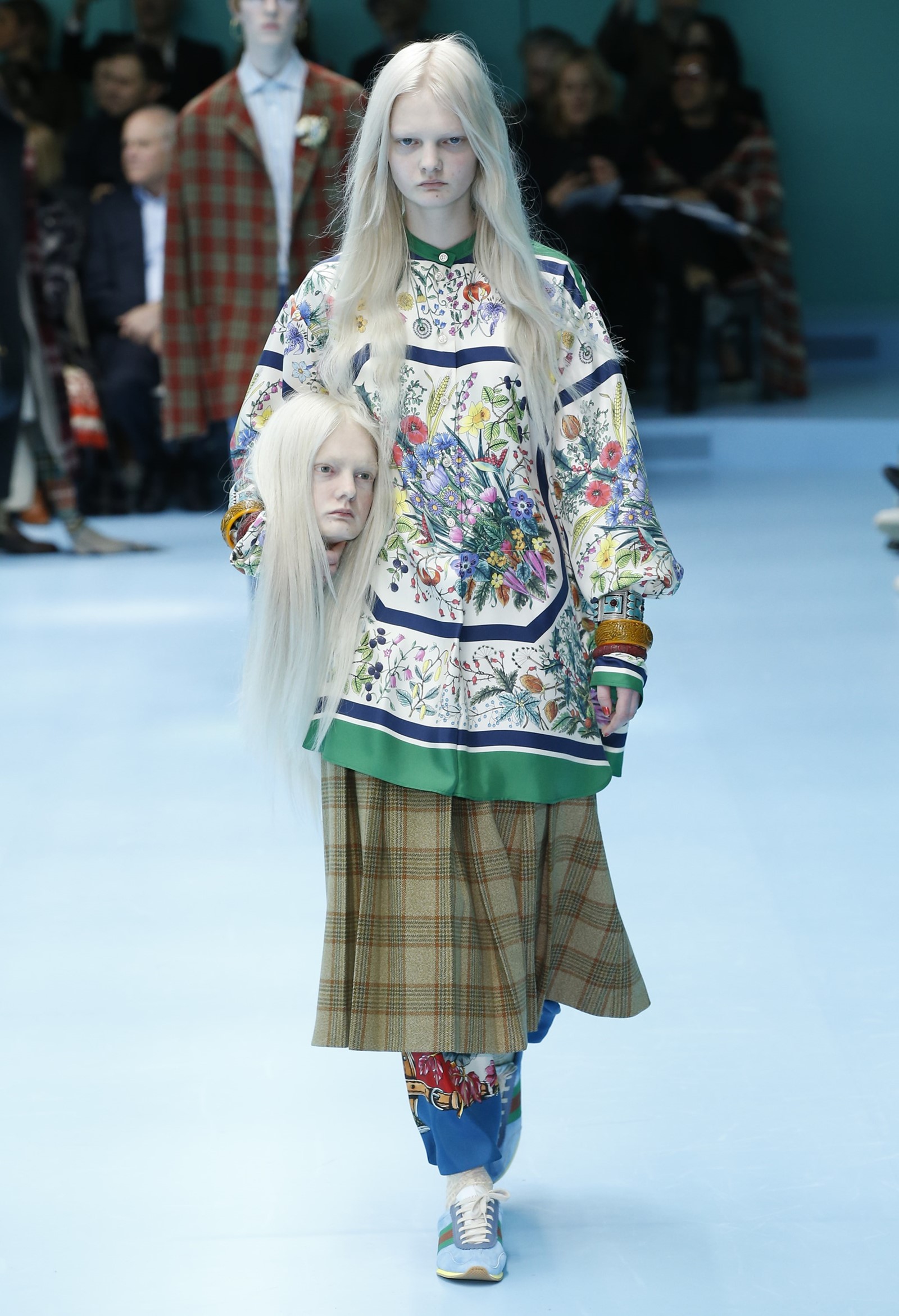
3. Novel accessories
On this note, next season’s most covetable accessory may well be one’s own severed head, cradled in the crook of your arm. Such was the case here, anyway – two models carrying their own likeness down the runway, in a comment on the “dualism and dichotomy of identity,” according to the press notes, a playful physical manifestation of ‘self-awareness’. No word yet as to whether these prosthetics will go on sale – but, as each one took six months to handcraft by Roman special effects studio Makinarium, it looks unlikely. The studio also created a baby dragon (a “puppy”, as the notes reported), a recreation of the Gucci serpent, and an iguana for the show, carried in a similar manner. Like the show itself, these off-beat accessories played off horror with fantasy, to spectacular effect.
4. Repurposed garment bags
Michele’s father worked for Italian airline Alitalia as a technician, and post-show the designer noted that much of the tailoring referenced the suits that he would wear to go to work during the week – “the codes that constrain us,” he elaborated, in reference to these corporate codes of dress. But Michele also repurposed the garment bag such a suit is traditionally stored in, and turned it into a piece of clothing. Here, it was created in delicate sheer fabric, left open at the bottom, the Gucci logo stitched on to the chest and worn over typically opulent gowns. It was a surprisingly elegant new proposition for outerwear, signalling Michele’s unrivalled ability to turn the everyday into the extraordinary.
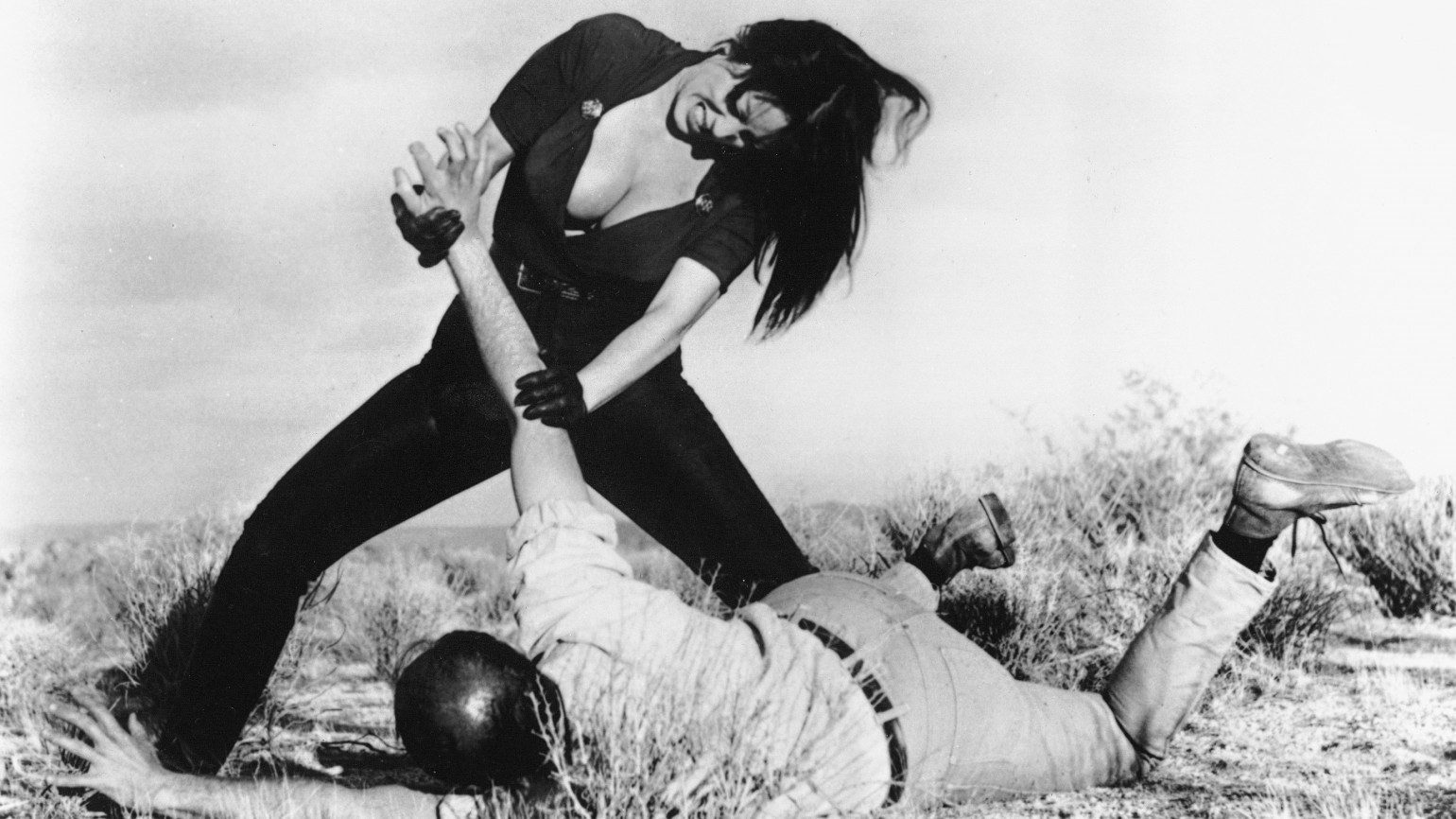
5. Faster, Pussycat! Kill! Kill!
Michele has long noted his fascination with Hollywood, and counts many a young starlet as part of his Gucci family. Here, he drew on the campy imagery of director Russ Meyer’s “sexploitation” films – taking the bold graphic design of their posters and stitching it onto jumpers, alongside the logo for American film studio Paramount. Meyer is perhaps most famed for the film Faster, Pussycat! Kill! Kill! which sees three go-go dancers on a murder spree in the desert – but, while the in-your-face appeal of his movies seems to align with Michele’s outré fashion vision, the evocation of Meyer here seemed more like an ode to Hollywood itself, and its power to transport – hammered home with the crystallised looks, where bejewelled headpieces drew comparisons to silent film star Theda Bara.
6. A 13th-century hymn
An undercurrent of macabre ran through the collection: there were those horror-inflected accessories, yes, but the soundtrack was sinister too, beginning with 13th-century hymn Stabat Mater, dedicated to the Virgin Mary’s suffering at the crucifixion. The title itself comes from the medieval hymn’s first line, “Stabat Mater dolorosa”, which translates from Latin to: “the sorrowful mother was standing”. The use of such a vast, haunting piece of music may have set a pessimistic tone, but here Michele evoked the biblical story for the opposite – just as he insisted that the show was an optimistic offering, so the hymn ends not with suffering, but Jesus’ glorious ascension to paradise.
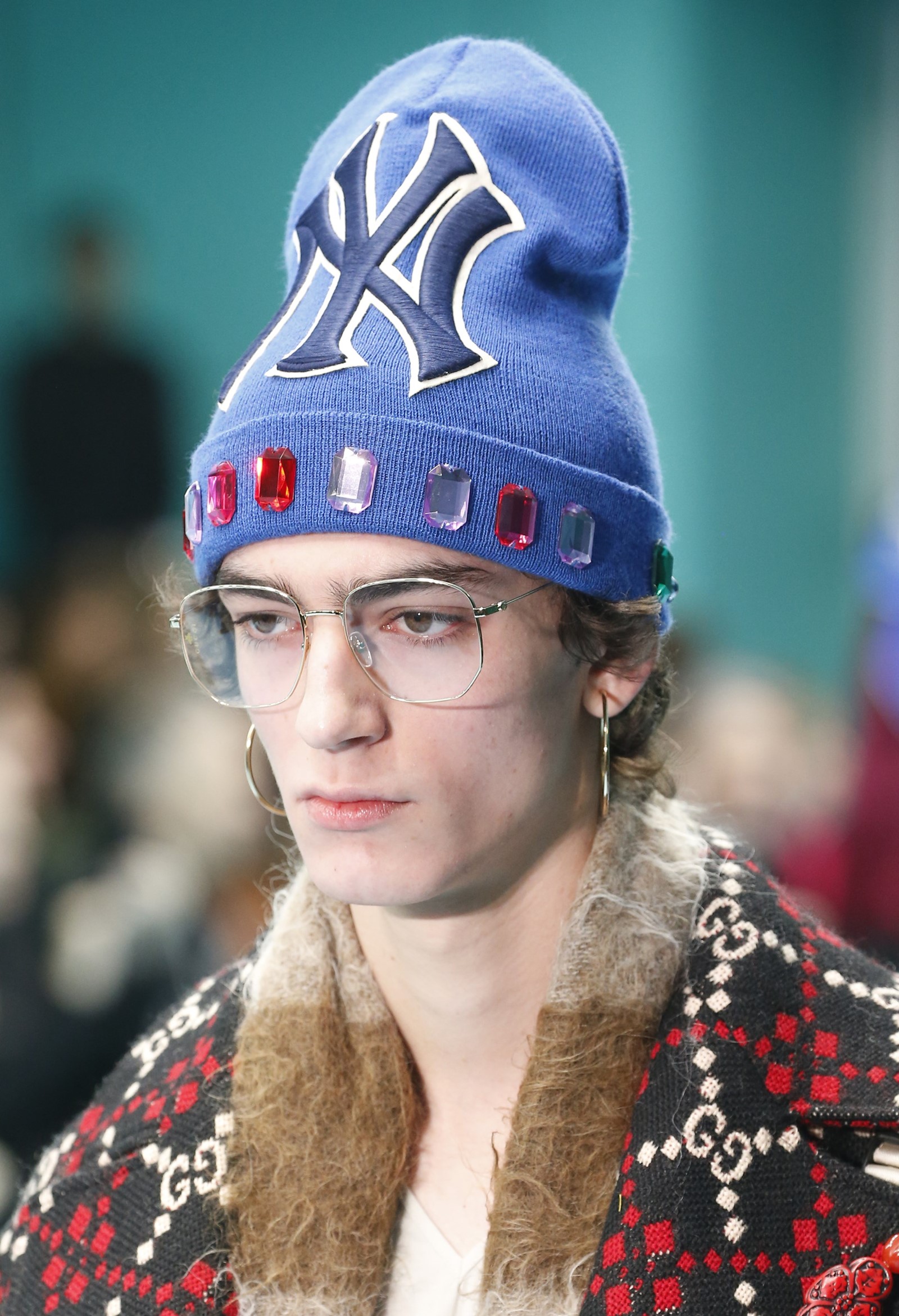
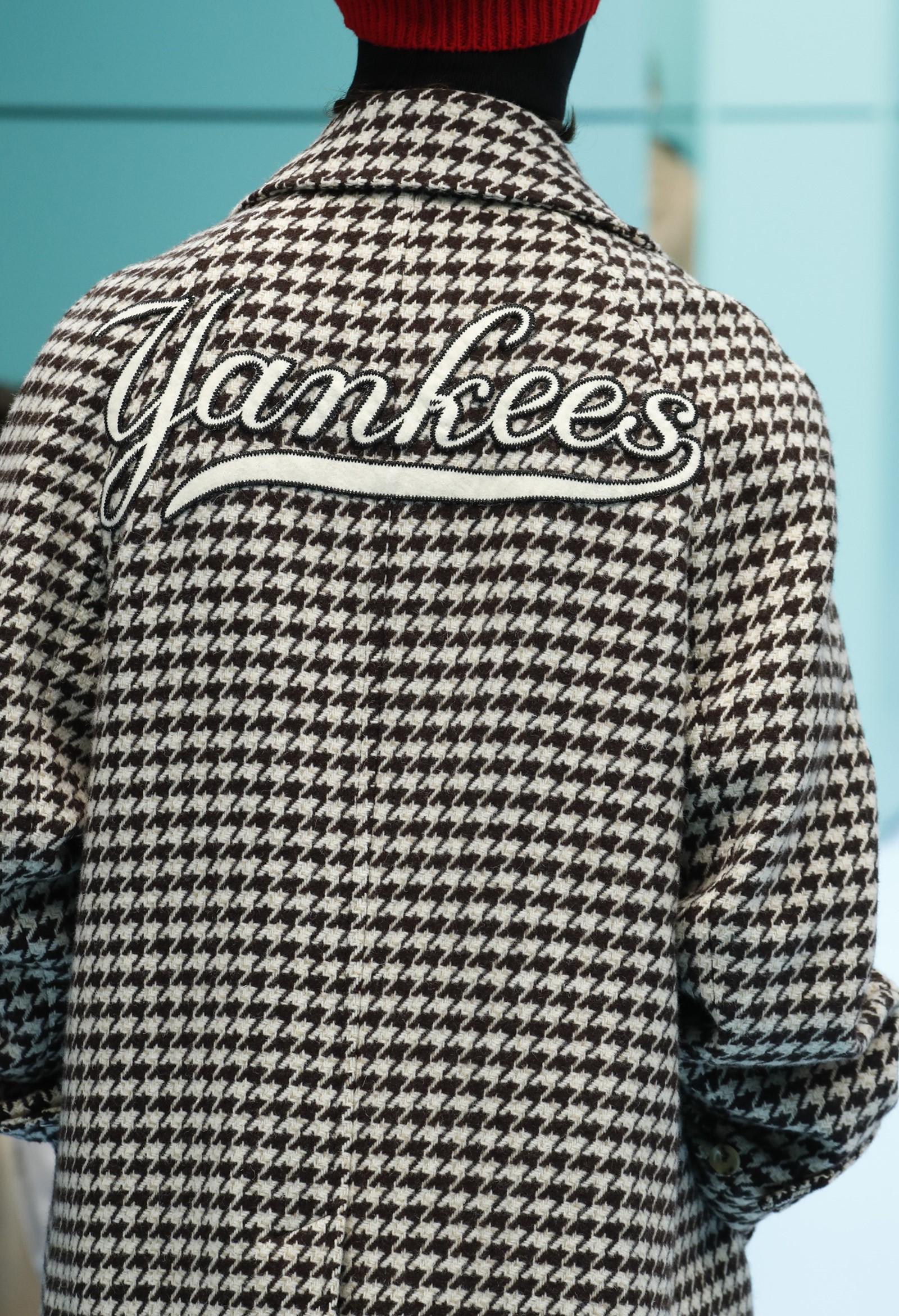
7. New York I Love You
When he is referencing this planet, Michele slips and slides between cultural codifiers (and those of his vast customer base), in this collection mixing Russian babushka headscarves with Chinese pagoda headpieces and Italian corporate attire. New York featured highly too. The designer has long been enamoured with a New York Yankees cap, taking many bows in his, and for pre-fall he collaborated with the sports brand on clothing accessories. This season, the logo works its way across pockets, beanies and bobble hats, as well as the ubiquitous baseball cap. The turbans of New York taxi drivers had their part to play as well, Michele explained, teamed with brocade dresses, tweed tailoring, and preppy blouses doused in jewels. In so doing, Michele paints his inclusive world representing “the invitation to diverge, not conforming to univocal and other-directed identity models,” as his show notes explain.
8. Japanese Manga
If the inspiration for the show itself began with Mary Shelley’s Frankenstein, the collection, like her monster, felt like a sum of its parts – a jarring collage of references gleefully clashing with one another. Such was the case with the wide-eyed cartoon faces, found across an intarsia knit jumper or on a Gucci monogram backpack, evocative of Manga, the Japanese style of cartoon illustration. It’s little wonder Michele nodded to the art form with this collection – Manga has long been known for its colourful stylings, wherein mythical beasts transform magically, and the worlds the characters inhabit provide a fantastical mirror to our own. Much like Michele’s own work, it is a complex visual expression in which nothing is quite what it seems.
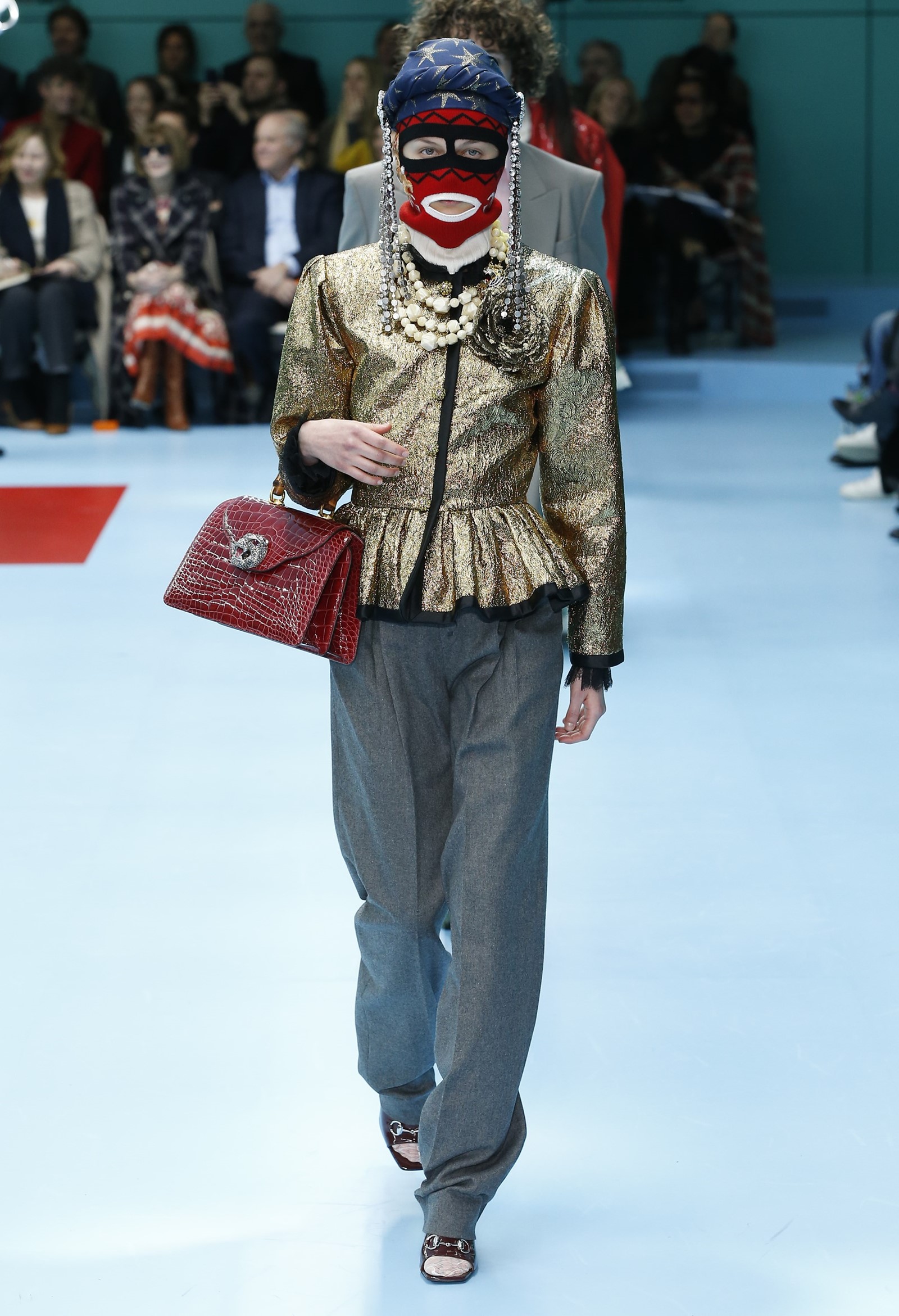
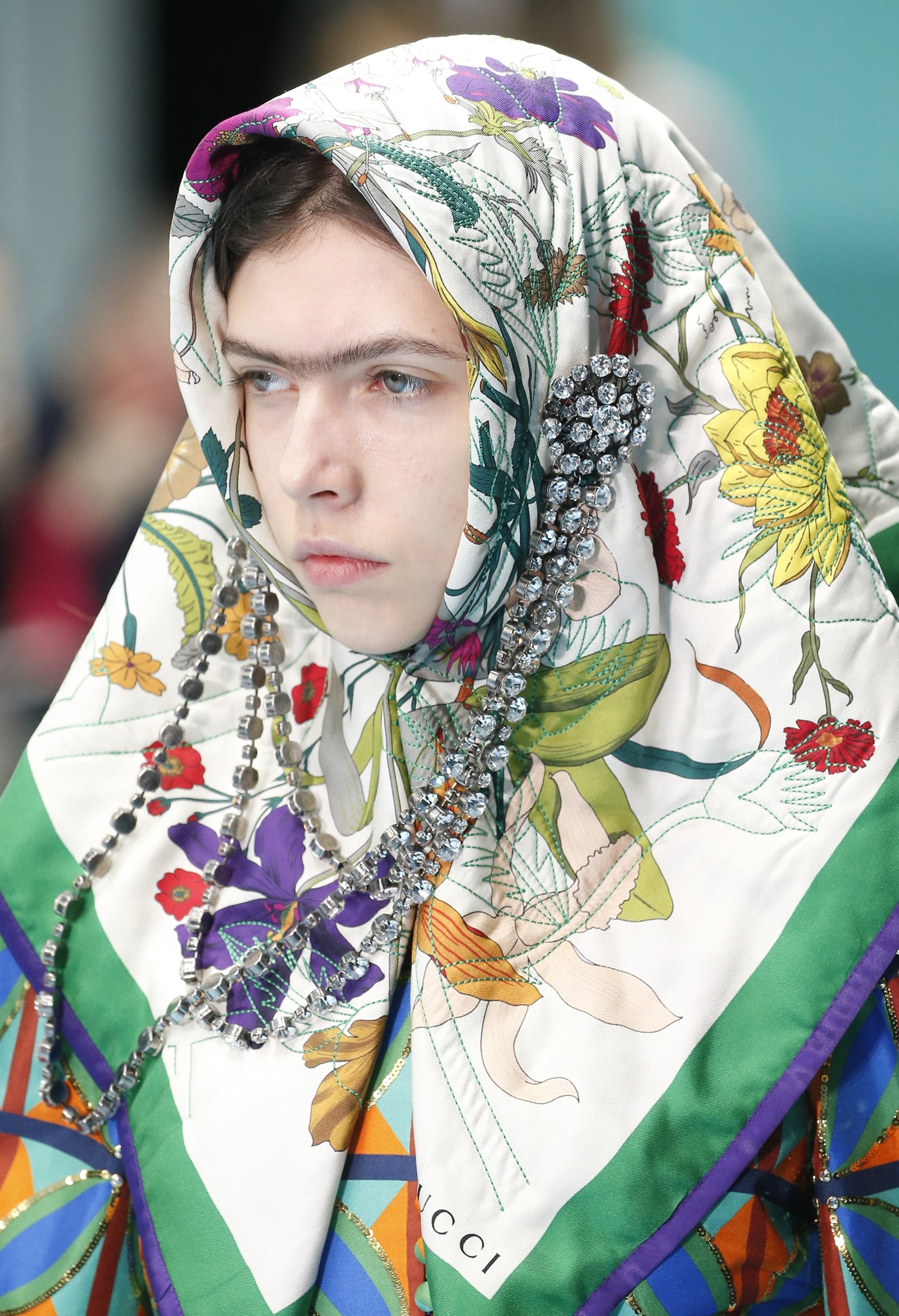
9. Overblown balaclavas
In homage to a true maverick creative, Michele created balaclavas reminiscent of the clownish make-up worn by artist, performer and provocateur, Leigh Bowery. Bowery was a perfect cyborg, conforming to no gender or species rules, his outlandish costumes typically defying all human proportion or fleshly form. His get-up – inflated red lips, stretched plastic skin, straps and adornments that turned his face into furniture – broke all boundaries between human and artifice, man and machine. For Bowery, gender too was a norm long since parted with. These balaclavas, with their huge painted eyes and smeared red mouths, echoed Bowery, while their intarsia knit and artisanal pom poms nodded to the Inuit – a further hybridisation of identity, time and place.
10. Baboushka headscarves
Tent-like printed headscarves in chintzy Russian florals took on wimple-like, old-master proportions for A/W18. In another nod to religion – this time Eastern Orthodox Christianity – Michele adds another veil of beingness to his universe; further plurality. Recontextualised, they are symbols of the dualism of identity he seeks to unpick. Their piousness and modesty, juxtaposed with seriously naked dresses exposing one, or maybe both, breasts (but for a jewel encrusted covering) are a reminder of how everyone is welcome in the Gucci pluriverse. The Gucci subject can be both, for their identity is ever-evolving, simply a “matter of choice”.
